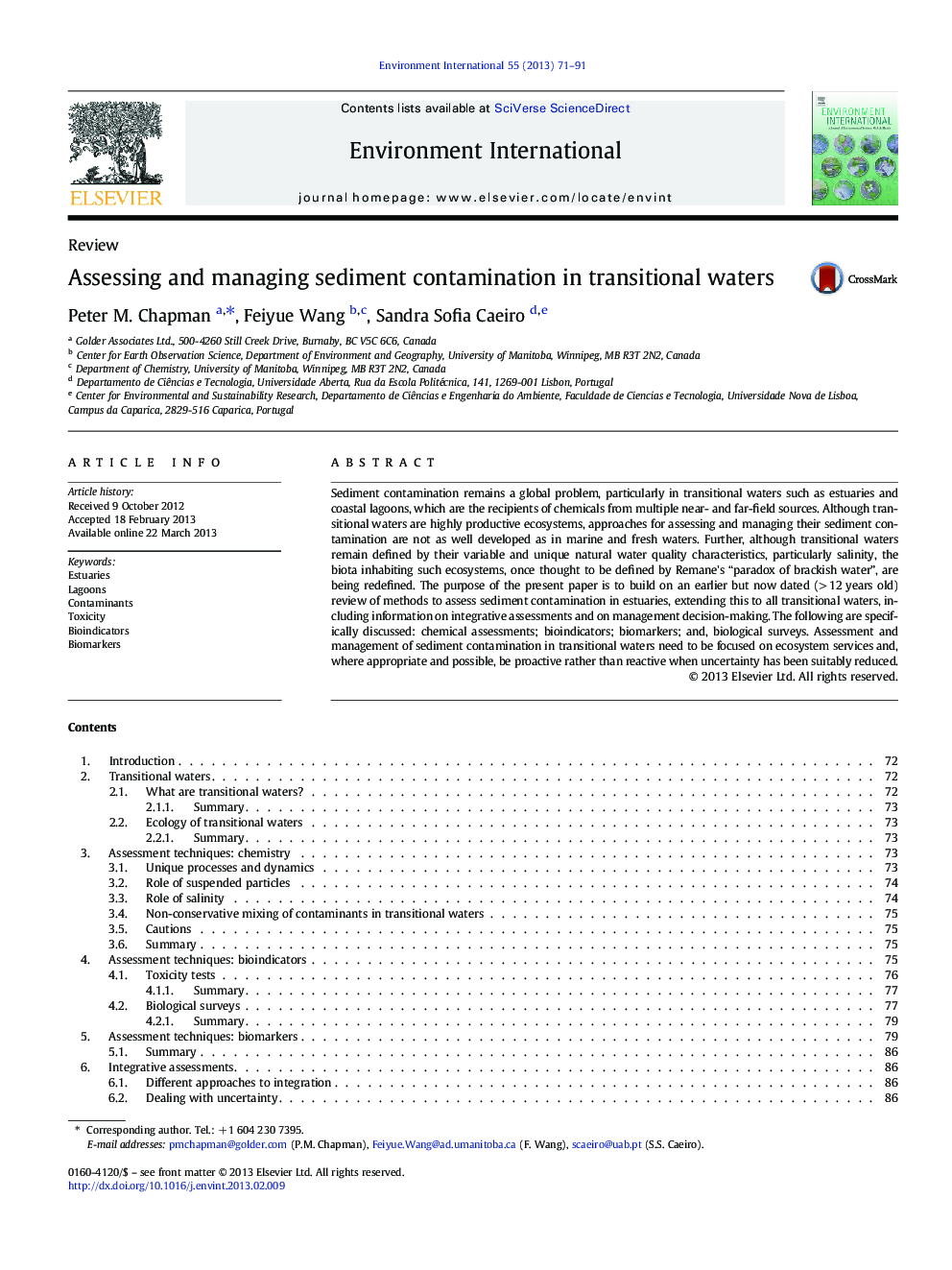| Article ID | Journal | Published Year | Pages | File Type |
|---|---|---|---|---|
| 6314383 | Environment International | 2013 | 21 Pages |
Sediment contamination remains a global problem, particularly in transitional waters such as estuaries and coastal lagoons, which are the recipients of chemicals from multiple near- and far-field sources. Although transitional waters are highly productive ecosystems, approaches for assessing and managing their sediment contamination are not as well developed as in marine and fresh waters. Further, although transitional waters remain defined by their variable and unique natural water quality characteristics, particularly salinity, the biota inhabiting such ecosystems, once thought to be defined by Remane's “paradox of brackish water”, are being redefined. The purpose of the present paper is to build on an earlier but now dated (>Â 12Â years old) review of methods to assess sediment contamination in estuaries, extending this to all transitional waters, including information on integrative assessments and on management decision-making. The following are specifically discussed: chemical assessments; bioindicators; biomarkers; and, biological surveys. Assessment and management of sediment contamination in transitional waters need to be focused on ecosystem services and, where appropriate and possible, be proactive rather than reactive when uncertainty has been suitably reduced.
â¢Transitional waters (estuaries, lagoons) are highly productive ecosystems.â¢Sediment contamination from direct and indirect sources is a continuing issue.â¢We review the state-of-the art of transitional-water-specific assessment and management of sediment contamination.â¢We focus on chemical assessments, bioindicators, biomarkers, and biological surveys.â¢We emphasize the importance of integrative assessments and ecosystem services.
